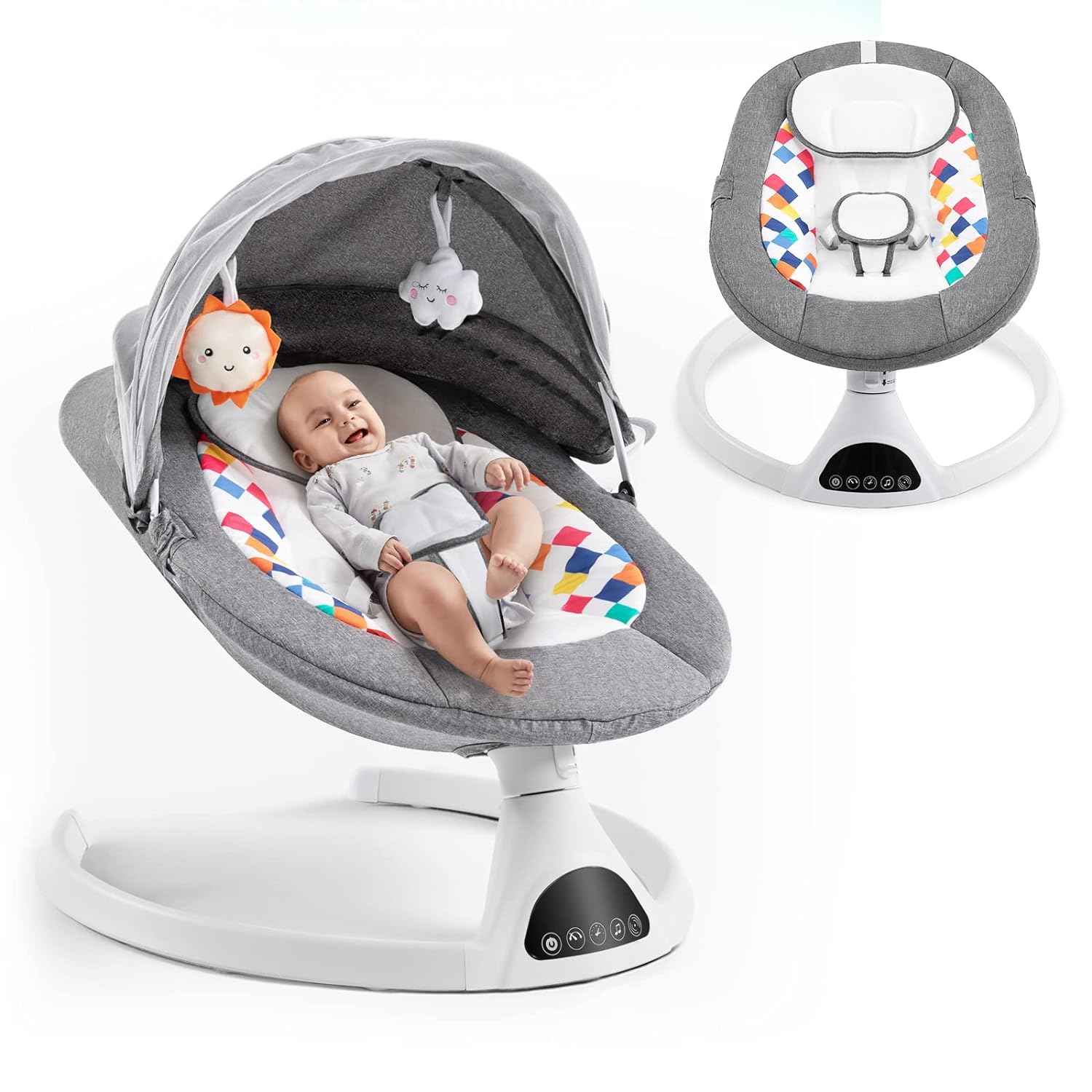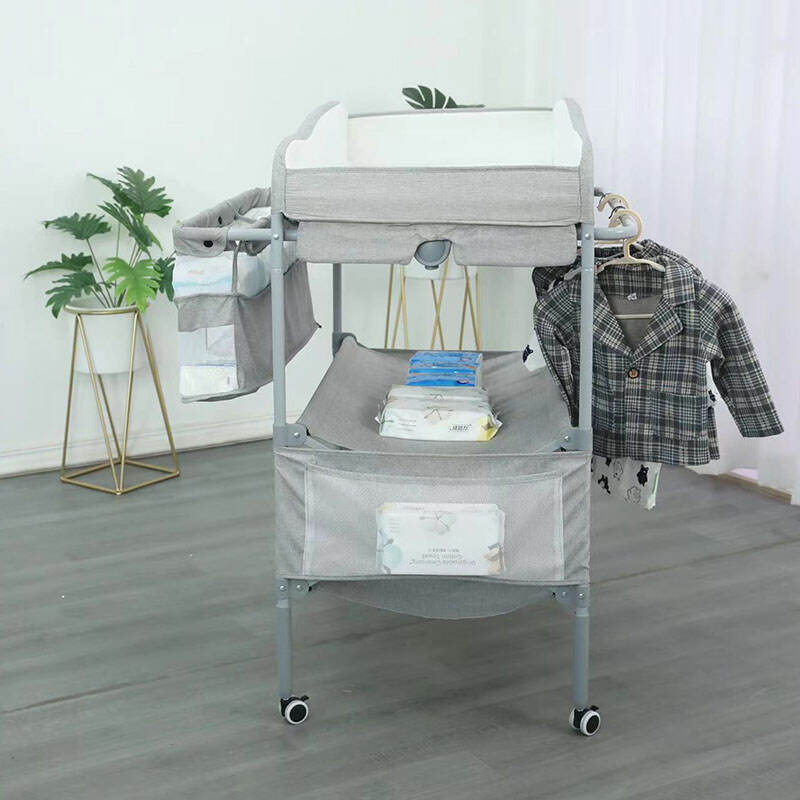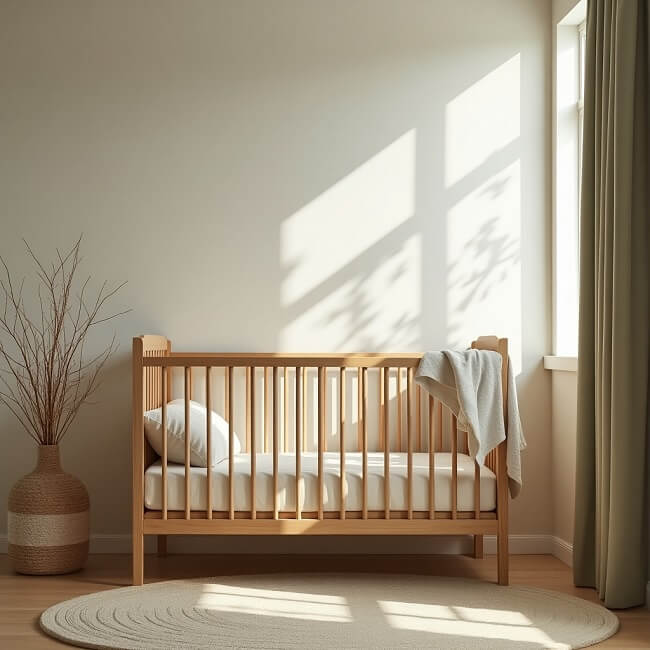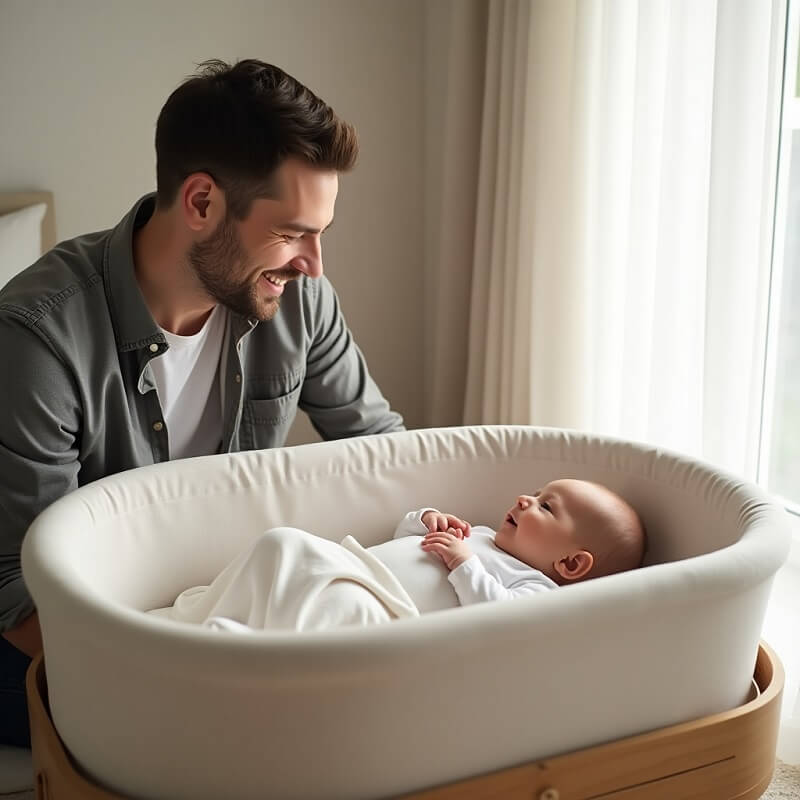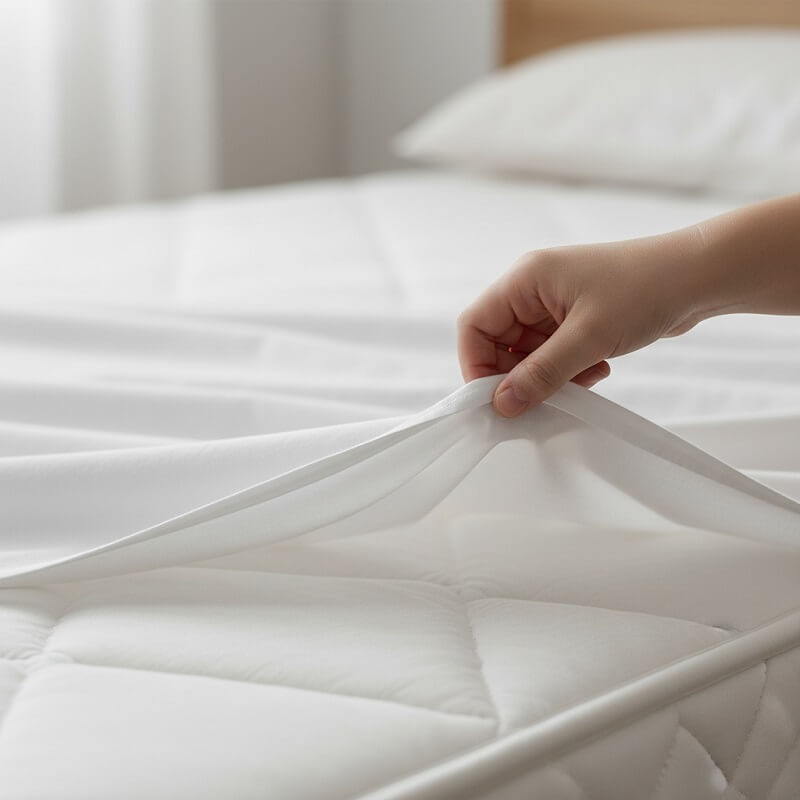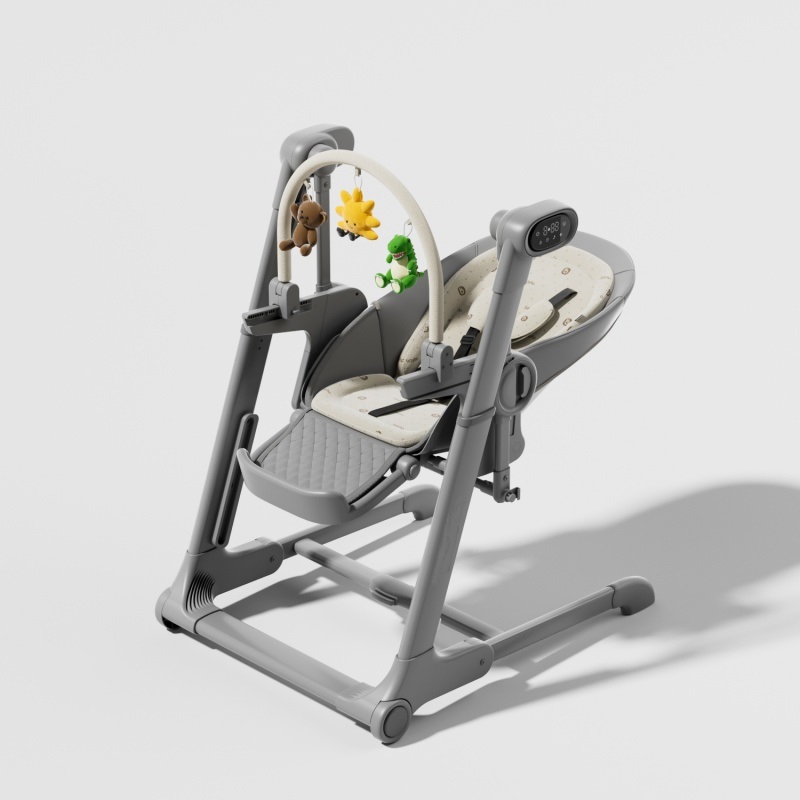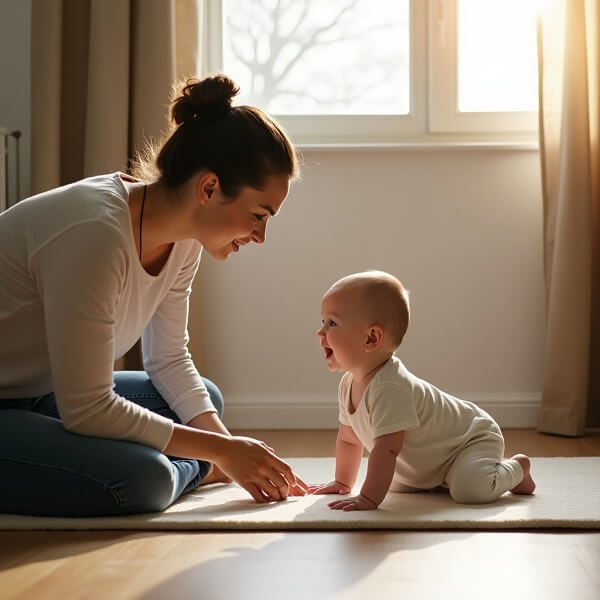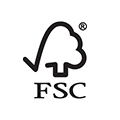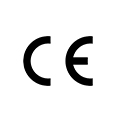Baby bouncers provide a convenient way to soothe or entertain babies while also keeping them comfortable. They come in handy when babies get fussy or need a little fun to distract them.
However, like most baby care items, it is important to know when you can use them and how to use them safely. So, in today’s blog, we explore when babies can use bouncers, how to use them correctly, and share other helpful insights.
Let’s dive right in, shall we?
What is a Baby Bouncer?
A baby bouncer is a device that can gently rock or bounce babies to calm or entertain them as they sit or lie in it. The designs vary but baby bouncers typically comprise:
- A frame that serves as the base that holds up the seating area and all other parts of the baby bouncer.
- A bouncy/swing mechanism that can be part of the frame. It facilitates the bouncy or swinging effect that a baby bouncer is supposed to provide.
- A seating area that is padded and draped in soft fabric.
As we have mentioned, baby bouncer designs and models vary. Some are manual and produce the bouncy effect when a caregiver gives the baby bouncer a gentle nudge. In contrast, electric baby bouncers have automatic systems. You can, therefore, turn the bouncing on or off and even set the baby bouncer in different modes depending on its features or functions.
At What Age Can a Baby Go in a Bouncer Chair?
It is allowable to use baby bouncers from shortly after birth to around 5 to 6 months, as long as you follow the recommended safety regulations (more on this below).
However, pediatric experts recommend that parents and caregivers stop using a baby bouncer once a baby can sit up. Other seating options may be better at this stage to allow them to practice more sitting and strengthen their back and neck muscles.
Stop using a baby bouncer when the baby exceeds the indicated age or weight limit indicated by the bouncer chair manufacturer. Using a baby bouncer beyond weight limits in particular can lead to accidents.
Signs That Your Baby Is Ready to Go into a Bouncer Chair
Infants are generally fragile and may not give you as many signs. However, one key thing to look out for is when the infant is slightly able to hold up their head or control their neck movements.
Neck stability is essential because it means that the baby’s head will not roll into uncomfortable positions when you put it in the bouncer chair. Good neck posture is also essential for comfortable breathing in case the baby doses off while they are in the bouncer chair.
Are Bouncers Safe for Babies?
Yes, baby bouncers are generally safe for babies.
Especially considering that quality baby bouncers have padded to keep babies comfortable. Their angled shape provides adequate support for the baby’s neck and back. Some bouncer seats are adjustable to ensure that the baby is properly and safely positioned.
These particular provisions are essential because they address the key concerns of whether a baby can be comfortable and safely positioned in a bouncer chair.
However, beyond them, baby bouncers have other essential safety provisions that assuage other concerns. The safety features include:
- Safety straps – they ensure that you can buckle your baby to the baby bouncer so that they do not roll or slip off it.
- A sturdy base – the base is built to support the weight of the seat and the baby and remains steady even as the bouncer gently rocks or bounces.
- Bouncy controls – some electric baby bouncers have controls that enable you to set the speed at which the bouncy chair moves. You can thus set a pace that you feel is safe and comfortable for your baby.
While these safety features offer protection, we can not overlook the importance of supervision. A parent or caregiver should always be in the room when their baby is in a baby bouncer chair.
Such proximity ensures that the parent or caregiver can adjust the baby at any time if they notice that the baby has moved to an unsuitable position. They will also be able to notice if the baby falls asleep and remove them from the baby bouncer. This is vital to note because pediatricians warn against using bouncers as sleeping areas for babies.
What Are the Benefits of Using a Baby Bouncer for Parents and Children?
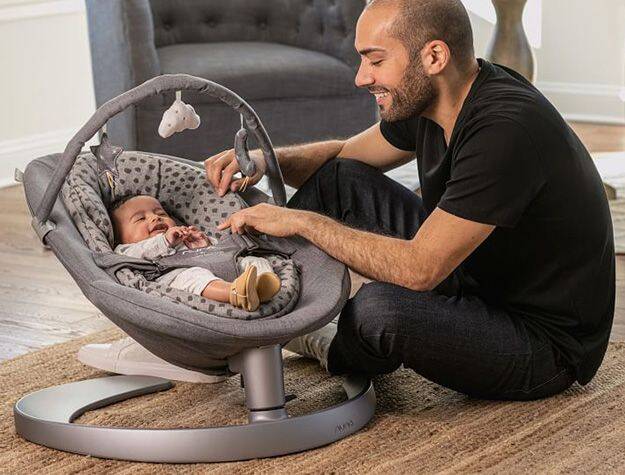
1. Baby Bouncer Benefits to Parents
As a parent, one of the key things you may consider when investing in baby care items is how they can help you be a better caregiver or whether they can ease your parenting journey. Well, here is some good news, baby bouncers offer even more benefits such as:
- Hands-free Childcare: Baby bouncers provide a safe play space where you can place your infant and keep them entertained as you handle a few brief chores. They can be a great solution if you need to rest, eat, prepare a bottle for the baby, or attend to another child. You only need to ensure that the baby stays within your sight at all times.
- Flexibility: Baby bouncers are compact and thus easily portable. You can, therefore, use them at home, at restaurants, or tag them along for outdoor picnics, etc.
- Alternative Play: The infant stage offers few play options as babies are still quite dependent on their caregivers. Baby bouncers, however, offer an array of options such as the engaging bouncy movement they provide, a chance to introduce appropriate toys to the child, or even play music and sing to the child.
2. Baby Bouncer Benefits for Babies
Whereas it is easy to only think of baby bouncers as fun or soothing, they provide other benefits such as:
- Cognitive Stimulation: Baby bouncer chairs that come with toys or music systems help awaken different cognitive senses in children. Toys, for example, can promote hand-eye coordination because curiosity often prompts babies to try and reach for them to figure out what they are. Music also has numerous neurological and psychological benefits for babies.
- Safe Play: a baby bouncer provides a safe space where infants can move their limbs, explore new toys, and enjoy bouncing without compromising safety.
- A Calming Effect: The movement of a baby bouncer can help distract babies and soothe them. This can be healthier than prolonged crying sessions especially when a parent or caregiver is exhausted and can not safely replicate the rocking motions for extended periods.
How Long Can a Baby Stay in a Baby Bouncer?
Baby bouncer sessions that last about 20 to 30 minutes or less are ideal.
Brief sessions prevent overstimulation for the baby. Especially if the bouncy feature is on while they are on it. Taking them off the bouncy chair gives them a break and allows their systems to calm down from the excitement.
Taking your baby off the baby bouncer after a short while also allows them to fully stretch their body which can be hard to do while they are strapped to the bouncer. Switching them to a play mat for tummy time, for example, can give them a good break and stretch time after the bouncy session.
On the upside, you can place your baby in a bouncer for multiple sessions in a day. You only need to ensure that the sessions are brief so that they get the healthy breaks that they need.
Furthermore, consider that every baby is different. Some may never want to get off a baby bouncer while some may find it overwhelming.
Always look out for signs of fatigue and discomfort to know when your baby needs to be taken out of the bouncer chair. These signs may include: Your baby cries in the rocking chair. They fidget and try to get out of the rocking chair. They show symptoms of irritability, such as refusing to engage or pushing toys away.
What’s the Difference Between Baby Bouncers, Rocking Chairs, and Baby Swings?
Baby bouncers, rocking chairs, and baby swings mainly differ based on how they function and their structural designs.
Baby Bouncer
A baby bouncer comprises a padded seating or reclining area and a frame with a system that can produce gentle bouncing motions. It mimics the action of gently bouncing a baby to soothe them like parents often do when babies cry.
Rocking Chair
Rocking chairs have a seating area that can sometimes also allow babies to recline. The base of the rocking chair usually has a semi-circular shape that arcs up off the floor. Due to this design, a small nudge makes the chair rock back and forth. This motion often amuses babies as it is akin to riding a stationary pony.
Baby Swing
Baby swings, on the other hand, consist of a frame that supports or suspends a padded seat. It also has a swing system that can either be manual or electric. The key feature, however, is that it gently sways the baby strapped in the seat back and forth.
Comparison chart of Baby Bouncers, Rocking Chairs, and Baby Swings
| Feature | Baby Bouncers | Rocking Chairs | Baby Swings |
| Movement Type | Bouncing motion (up and down) | Rocking motion (back and forth) | Swinging motion (side to side or back and forth) |
| Age Recommendation | Infancy (Birth to 6 months) | Suitable for newborns and older babies | Suitable for newborns and older babies |
| Portability | Generally lightweight and portable | Often heavier; less portable | Can be portable or stationary |
| Safety Features | Safety harness | Typically stable but no harness | Harness systems; safety locks |
| Soothing Effects | Calming bouncing can soothe fussy babies | Gentle rocking can be calming | Rhythmic swinging can soothe |
| Developmental Benefits | Encourages sensory exploration | Promotes bonding and calming | Encourages visual tracking and engagement |
| Durability | Typically for short-term use; check the weight limit | Durable for longer-term use | Durable, but depends on the model |
Which is the Best Baby Bouncer?
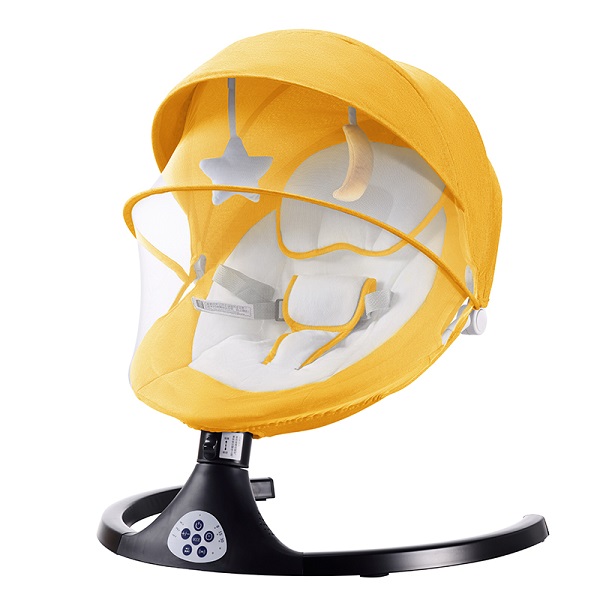
There is an incredibly vast range of baby bouncer options in the market. Subsequently, one of the safest approaches to choosing a suitable bouncer is to compare objective factors in your top baby bouncer options. This will help you narrow down your list to one or two ideal choices.
Factors to Consider When Choosing a Baby Bouncer
Safety Features: Evaluating the safety features and ratings that a baby bouncer has can easily tell you whether it is worth considering or not. For example, any worthwhile baby bouncer should have a buckling system to strap in the baby and a sturdy stable base. In addition, you can check whether a baby bouncer is certified as having met EU, U.S., or other recommended global safety standards.
Comfort: Aim for baby bouncers with adequate comfort features. The seat, for instance, should be properly padded and covered in soft cloth. Preferably, either the seat or its cover should be removable for washing to ensure proper hygiene. Look out for other comfort features like proper neck support as well because infants’ necks are quite fragile.
Portability: Portable baby bouncers are easy to pack and tag along for outdoor play or even travel. This is a plus because it does not limit usage to the confines of a home and thus allows parents more flexibility.
Adjustability: Babies seem to develop rather fast. Choosing an adjustable baby bouncer with options, like different recline angles, makes it easier to keep babies safe and comfortable throughout these developmental changes.
Age and Weight Limits: At a minimum, an ideal baby bouncer should have an age limit of 6 months and a weight limit of 20 to 30 pounds.
Popular Recommended Baby Bouncer Styles
Electric Baby Bouncers
Electric baby bouncers use electricity or battery power to simulate the bouncing effect. Quality models offer unique benefits, such as different preset bouncing speeds and music for entertainment.
Multifunctional or Transitional Baby Bouncers
A bouncer with multiple modes can likely serve as a bouncer, a swing, a rocker, or a combination of any of the three functions. A transitional baby bouncer, in comparison, can advance from one style of use to another. For instance, you may be able to transition the bouncer to a toddler chair.
Smart Baby Bouncers
Smart baby bouncers are similar to electric baby bouncers but they have the added benefit of tech-based features, such as the ability to select a timed bounce time and bounce speed. Gentle rhythmic vibrations soothe babies. It Can be connected to Bluetooth smartly.
Safety Considerations When Using a Baby Bouncer
Exercising safety precautions allows both parents and babies to enjoy the full benefits of a baby bouncer. Here is a quick look at some key safety considerations to always keep in mind.
Proper Set-up: Always begin by ensuring that the baby bouncer is properly set up according to the manufacturer’s instructions. Experts recommend that parents and caregivers place bouncers on the floor; if the baby moves vigorously or any mishaps occur, there is a much lesser risk of injury if the bouncer is already on the floor.
Safe Baby Placement: When you place the baby on the bouncer chair, check to ensure that their back and neck are well-supported. Recline the bouncer as needed to properly align your baby’s head and neck for safe breathing.
Use the Harness: Always use the safety harness to secure the baby on the baby bouncer. It should be tight enough to keep the baby from sliding off the chair but it should not be so tight that it becomes restrictive.
Follow Age and Weight Restrictions: Read the manufacturer’s age and weight restrictions and adhere to them. This includes placing only the baby onto the bouncer with no additional toys that may upset the balance of the bouncer.
Do Not Use the Bouncer for Sleep Sessions: Baby bouncers are safe for play and soothing babies but they are not recommended by medical experts as safe sleeping areas for infants. Therefore, be sure to always remove the baby from the bouncer when they doze off.
Adhere to the Recommended Usage Durations: It is safe to place your baby in a bouncer for intervals of up to 20 minutes. Longer durations can pose negative effects like overstimulation and discomfort, among others.
Ensure Adult Supervision: A baby should only be placed in a baby bouncer if an adult is present to oversee their safety and wellness. This guarantees a swift corrective response if any mishaps occur.
Conclusion
Baby bouncers can certainly be a beneficial addition for parents raising infants. Not just because they can amuse or calm babies but because they offer the much-needed breaks that parents often need in those intense first months of child-rearing.
The key, however, is to choose safe, quality bouncers from a reputable baby bouncer manufacturer.
Clafbebe baby bouncers provide optimal comfort and gentle movements that are safe and enjoyable for babies. We use quality materials and each of our baby bouncer models is certified to meet the highest international safety standards. Contact us for a quote or any inquiries.
Recommended Related Articles:

